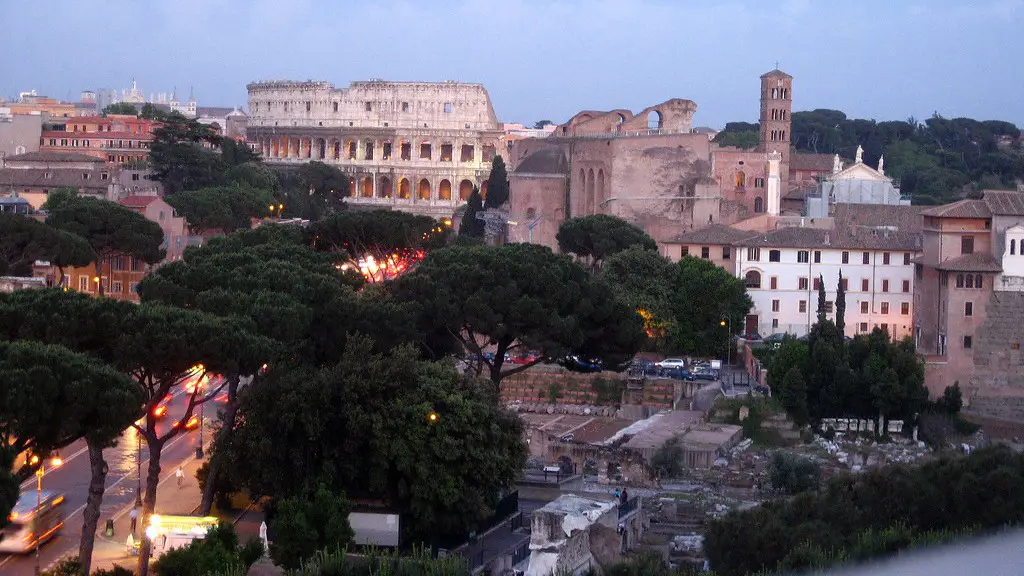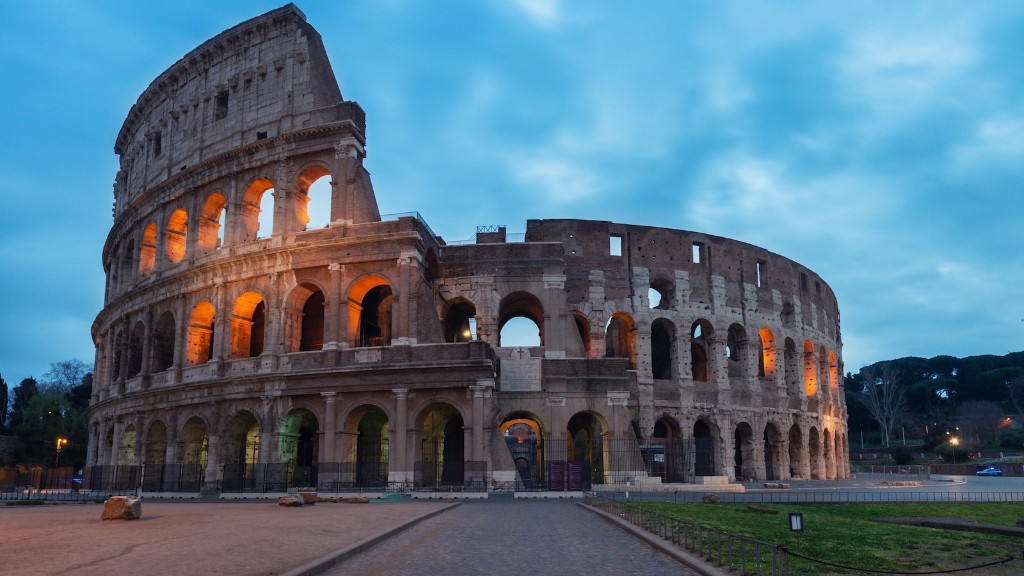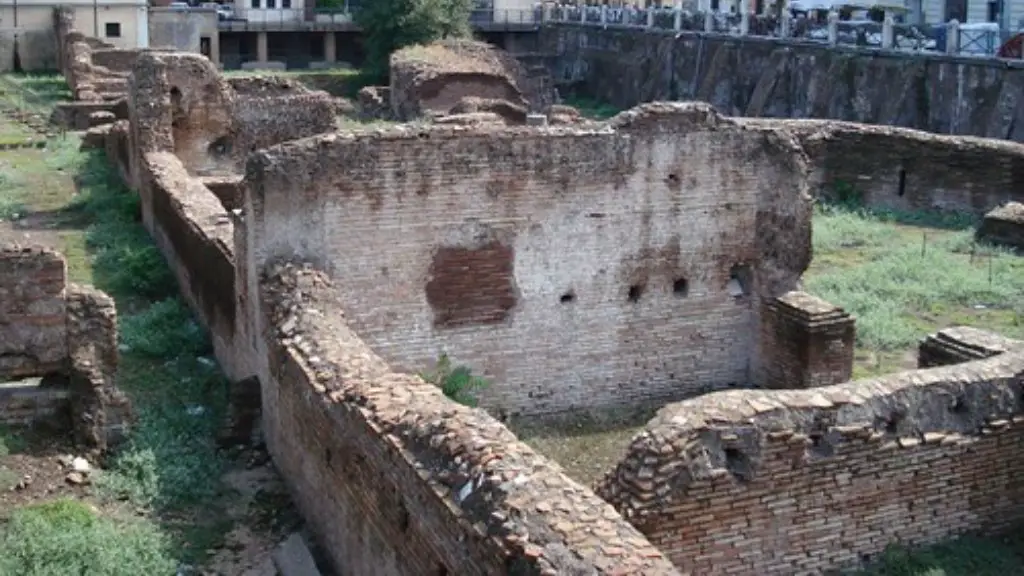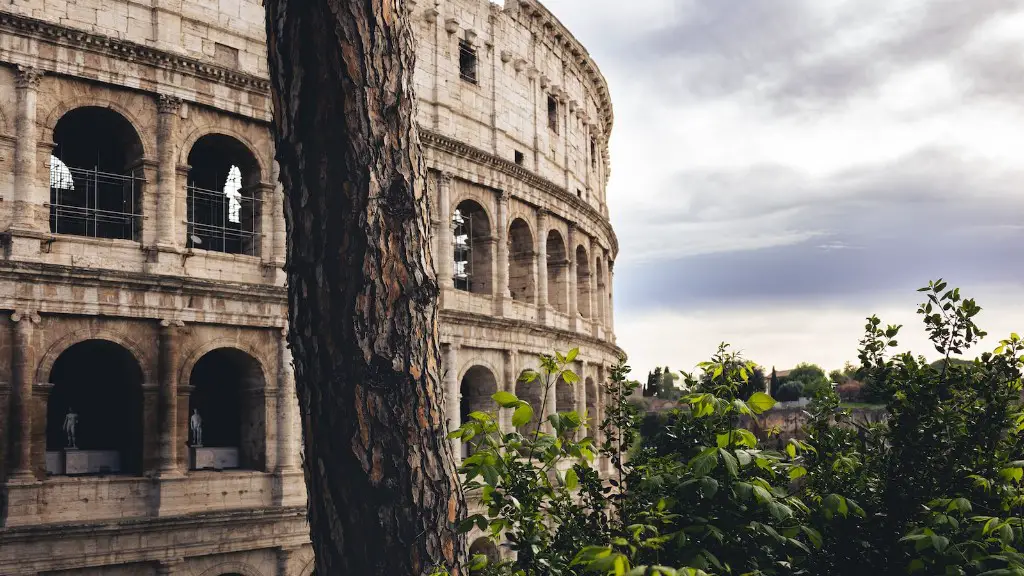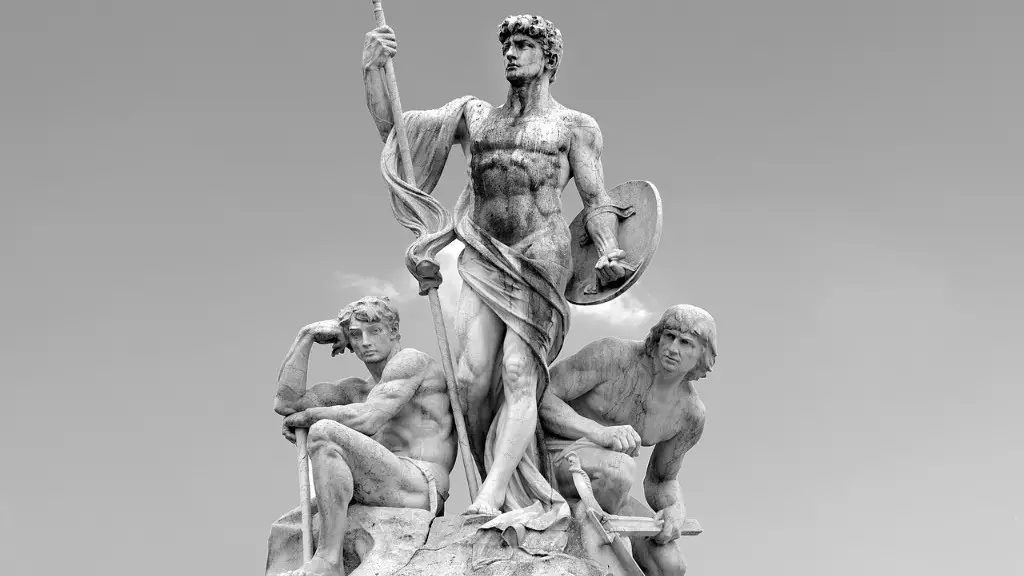The ancient Roman Empire was one of the greatest and most influential civilisations in history, stretching across Europe, North Africa, and the Middle East. It rose to prominence in the 6th century BC and at its height, it spanned an area of over 5 million square kilometres. Throughout the centuries, ancient Rome achieved a number of remarkable achievements in the areas of literature, arts, engineering, politics, and more that still have an impact today.
One of the most impressive accomplishments of the Roman Empire was their engineering feats. The Romans built a series of impressive roads and aqueducts that still stand today, and they also developed complex systems of bridges and dams. The Roman Colosseum, which was built in 80 AD, was one of the most impressive public works of all time, seating up to 50,000 spectators. The Pantheon, built in the 2nd century AD, is the best preserved of all the ancient Roman buildings, and the complex network of aqueducts they built is still in use today in parts of Europe.
In the area of literature and culture, ancient Rome achieved a number of great accomplishments as well. Roman literature was among the most influential of its time, and it is still studied and appreciated to this day. Latin, the official language of Rome, is still spoken in some parts of Europe today. Roman law was also a major part of their civilisation, and it is still the basis for many of the legal systems in the world. The political structure of the Roman Empire, which was a strong autocracy, was highly effective and still serves as a model for many modern governments.
The Romans also made great contributions to the advancement of science. They studied mathematics and geometry, as well as astronomy and medicine. They developed a calendar that was based on the movement of the sun, which is still used today. In addition, they invented a number of weapons and war technologies, including the ballista and the catapult, which changed the course of warfare and tactics.
The Roman Empire was also a great cultural force, spreading its religion, art, and lifestyle around the world. While their reign eventually ended, the legacy and achievements of the Roman Empire live on today. They are remembered for their engineering feats, laws, literature, culture, and scientific advances.
Impact on Religion and Empires
Rome had a great influence on Christianity – the faith created by founder Jesus Christ – as the Roman Empire made efforts to promote monotheistic beliefs and practices. In total, over 100,000 people were christian builded during the Roman Empire, comprising over 30% of the population, as outlined by historical sources. The Vatican and Saint Peter’s Basilica however was built after the fall of the Roman Empire although it sits on the location of the emperor Nero’s Circus.
The impact on other empires is also present, with the political and military legacies of Rome having a big influence on nationalist movements. Of course, the whole notion of a Republic – a term that the Roman Empire popularised – is a legacy of the Roman Empire, and the idea of voting, democratic assembly, and free speech all come from the Roman Republic.
Even the archaeological heritage of the Roman Empire is still very much present with monuments like the Colosseum and Pantheon drawing millions of visitors from around the world each year.
Impact on Education
The Roman Empire’s educational legacy is renowned with many of its institutes and academies responsible for producing a number of influential figures in history. In fact, Rome was responsible for developing a number of education systems that we take for granted today, such as public schooling and higher education.
The Roman Empire was also responsible for introducing the world to literature, through the works of influential figures such as Virgil, Horace, and Ovid. Rome’s emphasis on education also saw its language – Latin – become the basis of language in many parts of Europe, as many elements within modern English can be traced back to its Latin roots.
Impact of Architecture
The use of classical Greco-Roman architecture can be seen throughout the world, with examples such as the US Capitol Building, the White House and the British Houses of Parliament being heavily inspired by the elements of Roman engineering and architecture.
The impact of the Roman Empire on architecture is perhaps most evident in the form of monuments and public squares, with the Capitoline Hill in Rome being a notable example. This is still seen today with the Colosseum and Pantheon, as well as a number of public squares like the Piazza del Popolo and Piazza Navona still being extremely popular tourist attractions.
Impact on Language
The Latin language, which was the official language of the Roman Empire, is still spoken in some parts of Europe today. It was used in the formation of Romance languages, such as Italian and French, and has given us hundreds of words used in everyday language. Many academics have argued that without the influence of Latin, the world would have no proper fonts or any knowledge of literature, science and philosophy.
The Roman Empire also gave us the alphabet, which was initially derived from the Latin alphabet. This alphabet is the basis for all modern European languages, and it is still used today in English, Spanish, French and many other languages.
Impact on Warfare
The weapons and tactics developed by the Roman Empire were extremely advanced for its time, and some of them are still in use today. The Romans are renowned for their use of siege engines and fortification walls, which helped them conquer vast swathes of land. They also developed complex defensive structures like the castra and the turris to help protect their cities.
Their weapons, such as the gladius and the pilumnus, had been designed with efficiency and speed in mind. One particular innovation of the Romans was the use of weapons such as javelins, which allowed them to fight without getting too close to their enemy. This strategy would remain dominant throughout the Middle Ages, and it is still in use today in some forms.
The Roman Empire’s utilization of cavalry also revolutionized warfare. Cavalry was one of the most important parts of the Roman military, and this tactic was adopted by many other empires and nations later on. This is still seen today, with many modern armies utilizing cavalry units for scouting and reconnaissance.
